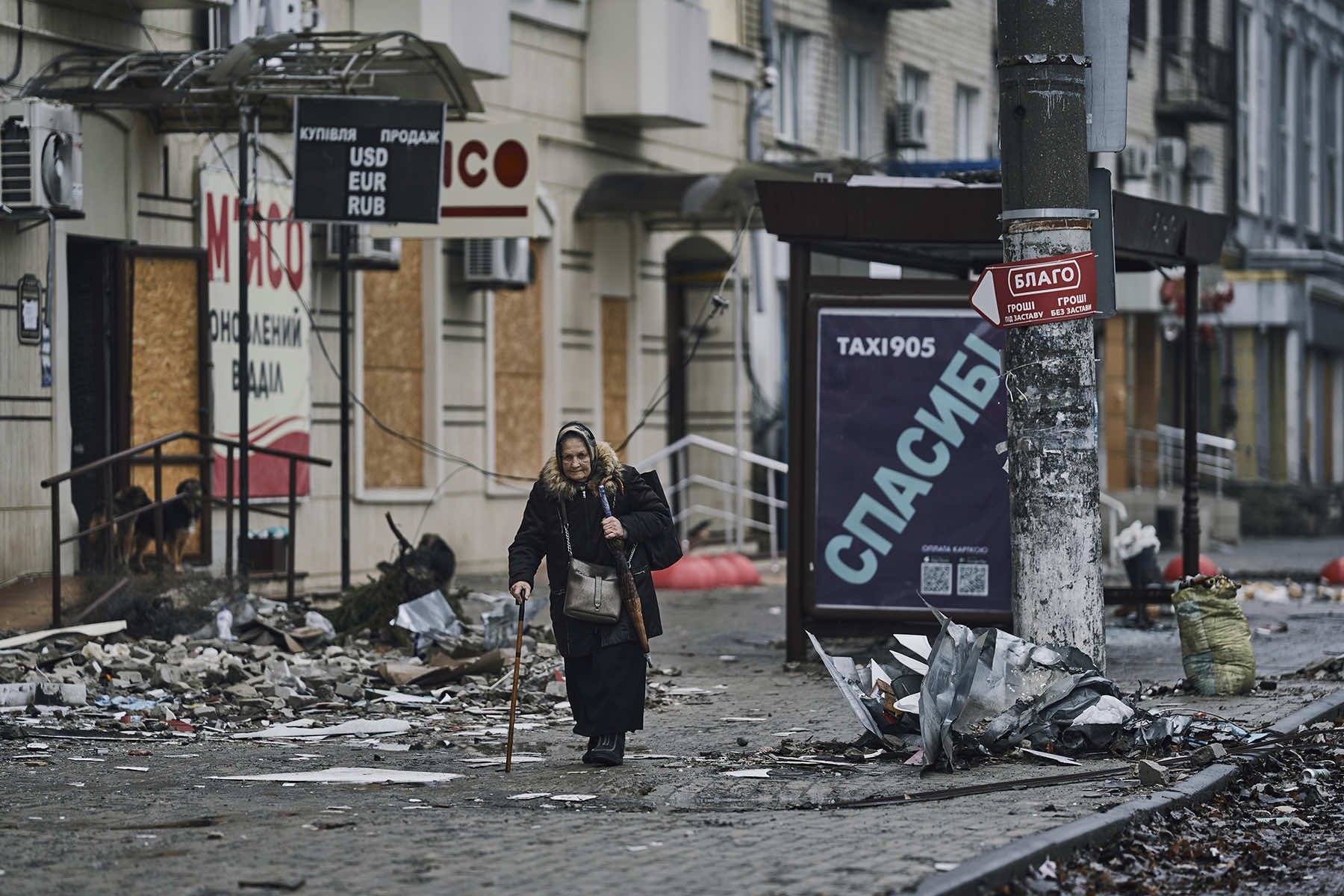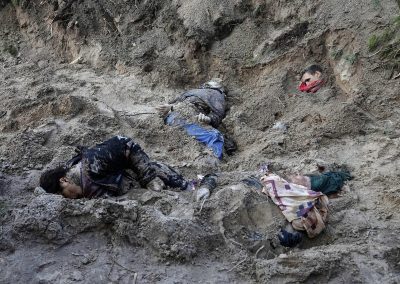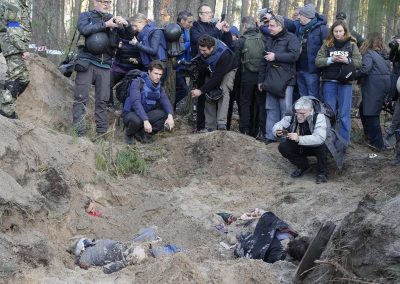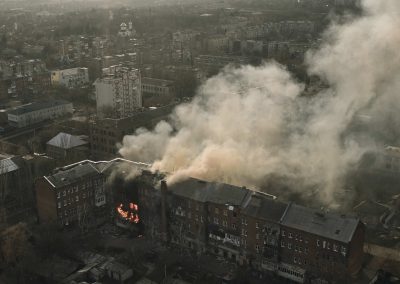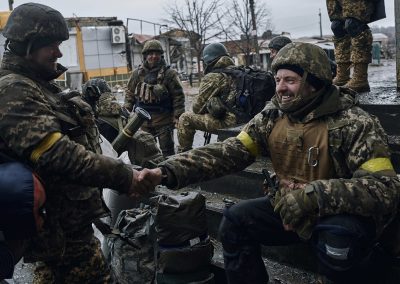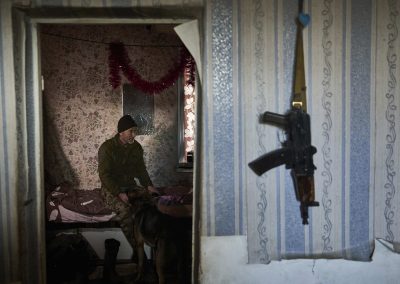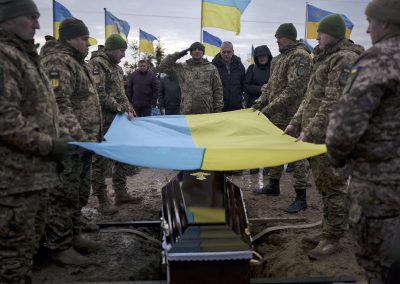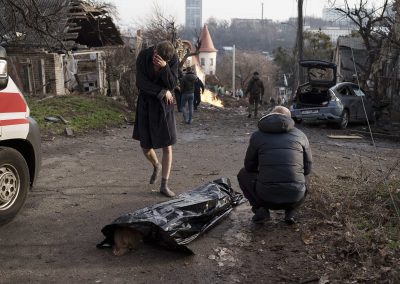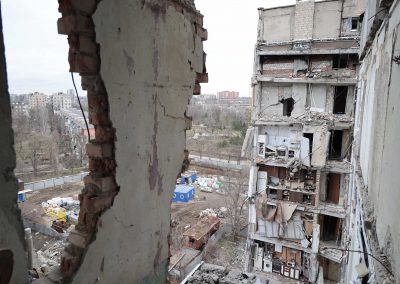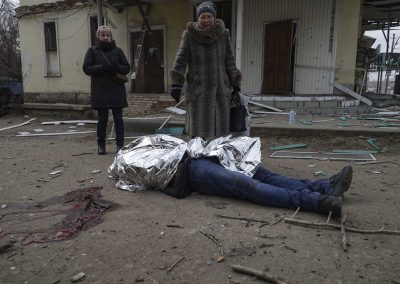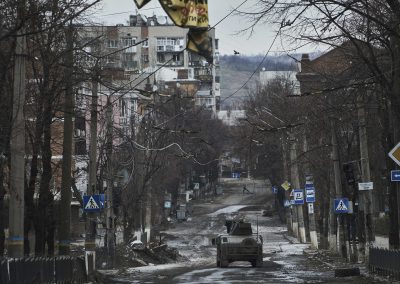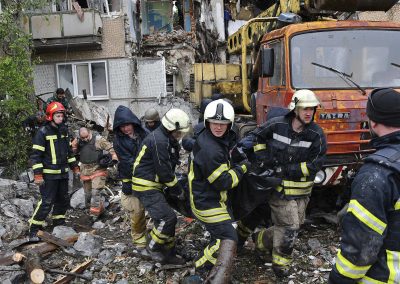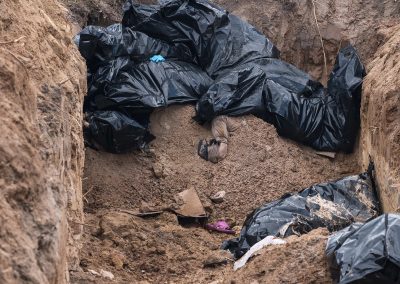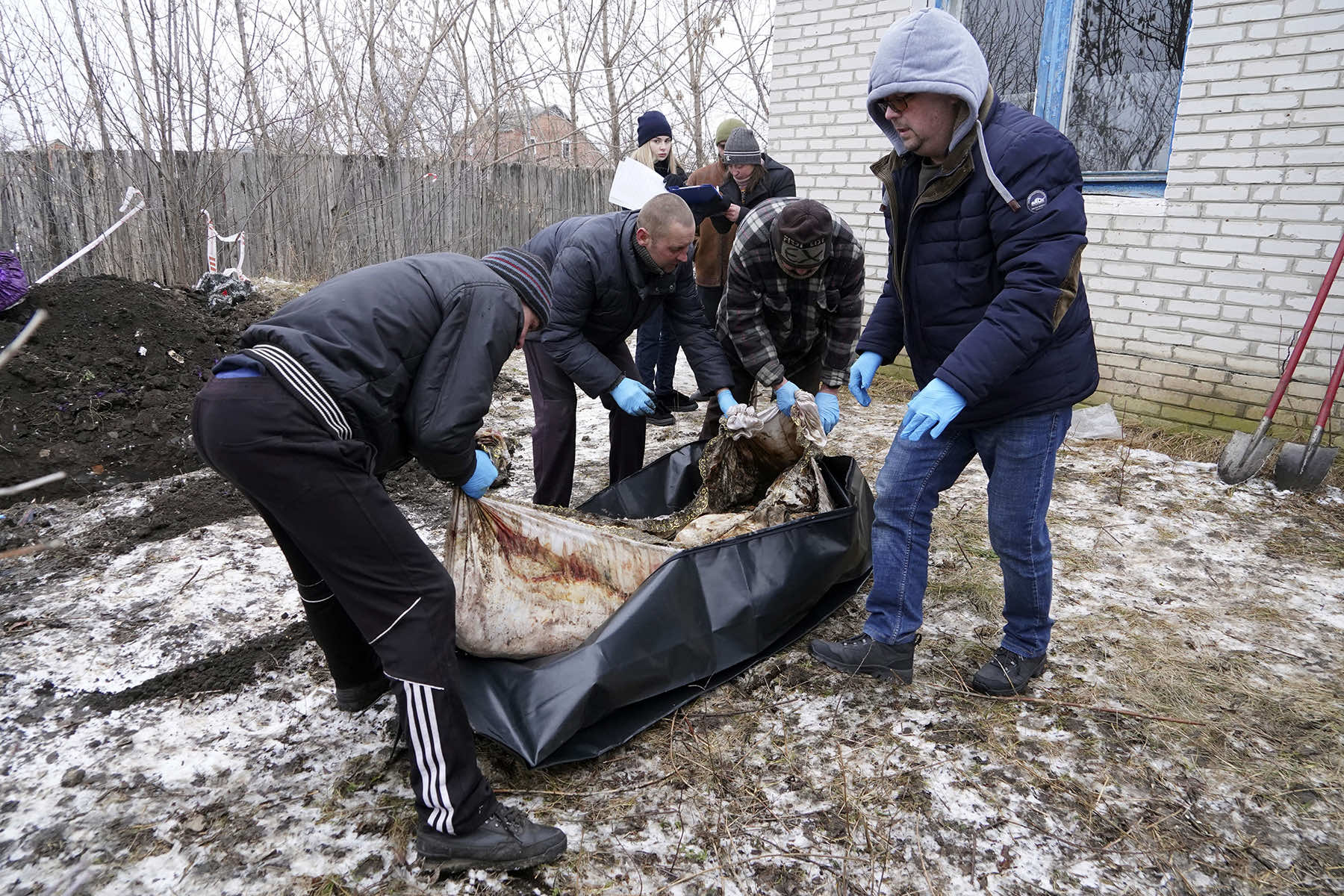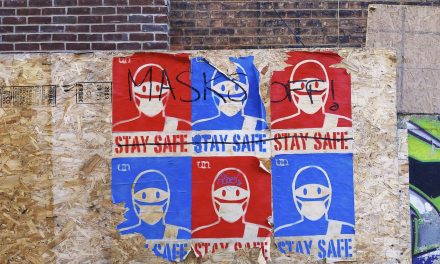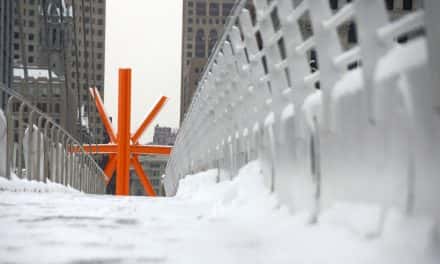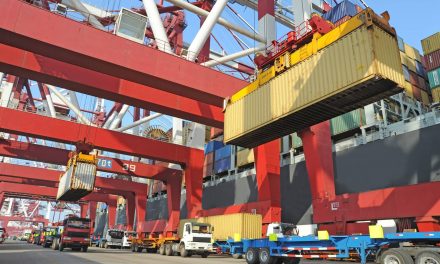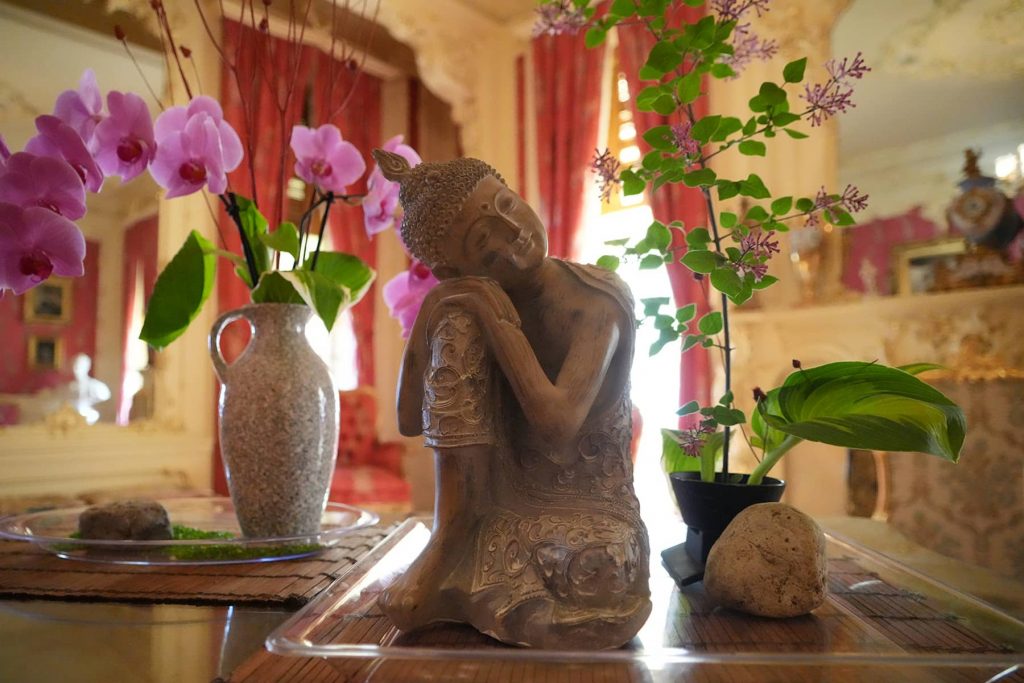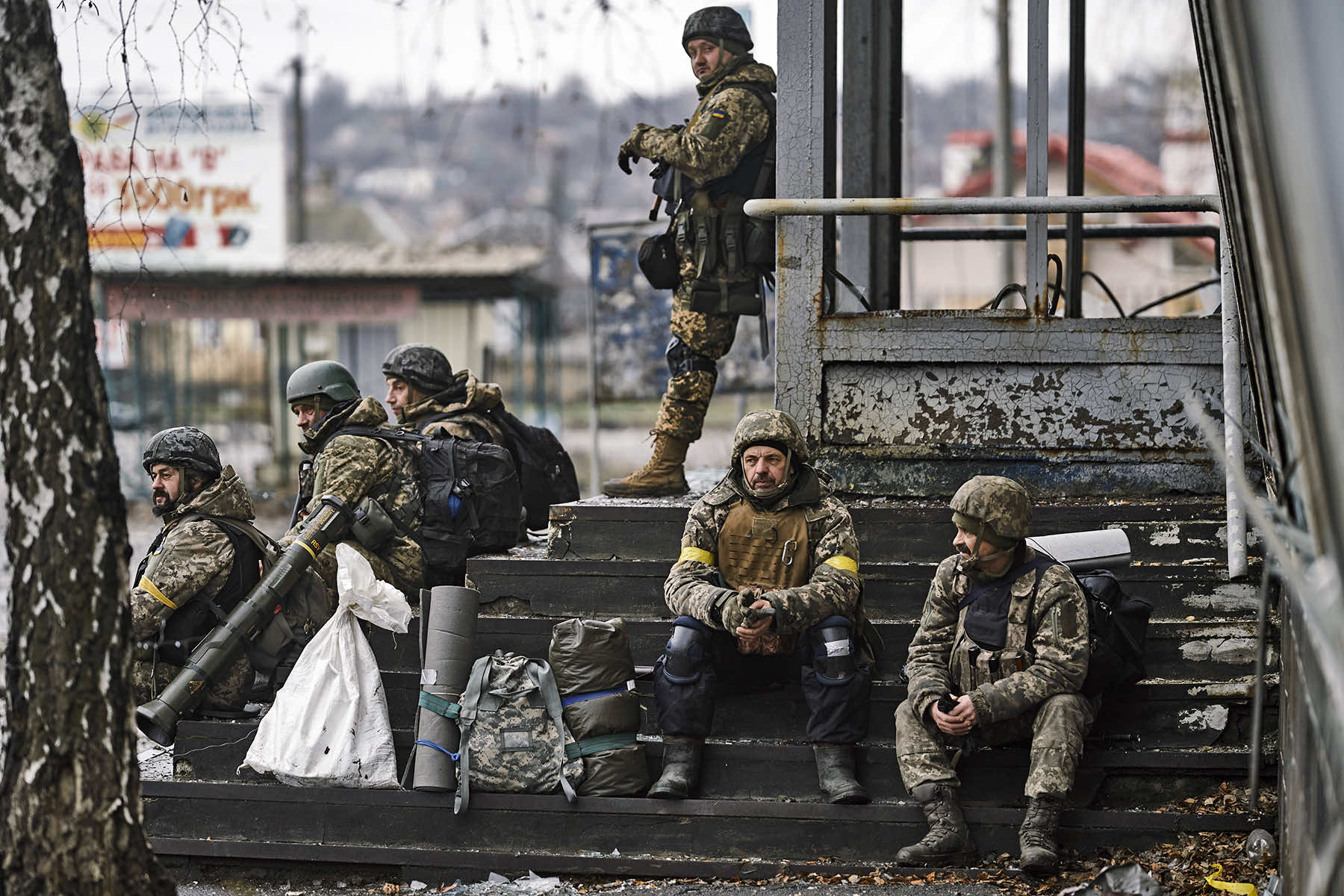
“Calls for peace that suggest Ukraine should give up its territory simply to end the war will condemn Ukrainians in occupied territories to what will likely be unspeakable horrors, and will provide a precarious foundation for lasting peace.” – Oleksa Drachewych
I have reflected on Russia’s invasion of Ukraine over nearly each of the last 365 days of this past year. It has not faded from my attention. For the one year anniversary, the Milwaukee public may show a modest amount of interest on the morning of February 24, before returning to self-absorbed issues later in the day. I am left to wonder what more I can say to educate about the conflict, and Ukraine’s effort to preserve its freedom.
I have read in-depth analysis from government agencies and other war correspondents, listened to personal accounts from survivors in Ukraine and refugees in Wisconsin. I have tried to honor them my telling their stories with frequency and intention. If I were informing someone they had cancer, the concern would fill their every waking moment. But not so much if I gave their neighbor that news instead.
Over the past 365 days, from February 24, 2022 to February 24, 2023, the Milwaukee Independent has published more than 330 features. At about one-third of our annual content, they have included dozens of interviews, photo essays with hundreds of images, and an extended news series reported from Ukrainian soil. The invasion has been as big of an editorial commitment of resources – if not more – than the Black Lives Matter movement and January 6 Insurrection.
As a photojournalist, Russia’s brutal and unprovoked invasion of Ukraine changed the trajectory of my career much in the same way that COVID-19 disrupted it. There have been so many things that once seen cannot be unseen. And yet, I stood at the center of it all taking photos of what I saw. Those images were proof in realtime, and as a historical record for future generations.
I lived through SARS in China, and the 2011 Tōhoku earthquake in Japan. Barely 10 years later, I experienced COVID in America. Then found myself standing in abandoned Russian fortifications on battlefields of Ukraine. Within a year, I was in Jordan where I met Syrian refugees from their nation’s Civil War – who also suffered from Russia’s brutality, just a week before an earthquake devastated parts of Syria and Türkiye.
It is hard to see such things in the world, and return to the safety of Milwaukee. It is a different world here with its own problems, primarily concerning racism – which is a systemic American problem. While many people would prefer to not hear about these experiences, or see the images depicting them as proof, I cannot be a witness to them and remain silent. Especially not for the sake of privileged comfort.
I have no compelling argument to make anyone in Milwaukee care about Ukraine today than they did a year ago. The Ukrainians are fighting our war for us. They are fighting for the democracy we as Americans seem to have little value for – as many here at home would prefer to see a dictator like Putin rule.
But beyond all that, February 24 is a horrific landmark that cannot pass without comment or reflection.
“Exactly a year ago we woke up to explosions in the area of Hostomel Airport. Ukrainian soldiers took part in their first battle there. That morning the enemy began ‘taking Kyiv in 3 days.’ And just a month after the first explosions in Irpin, we stopped them on the way to the capital. Today will be a difficult day as we take a moment of silence to remember the best sons of the Irpin community who gave, and continue to give, their lives for Ukraine and its right to freedom and independence.” – Oleksandr Markushin, Mayor of Irpin
I remember that the invasion started on the evening of February 23, Milwaukee time. The terrible reality that no one wanted to believe could happen had happened. Milwaukee Independent had been heavily covering the anniversary of Trump’s attempted coup on the American government with the January 6 Insurrection. Ukraine was on our radar, but without urgency.
Thankfully, I saw a very moving essay on Facebook written by Jennifer Vosters, a young and brilliantly talented local actress who I had interviewed a couple years before. I had a great deal of respect for Jennifer, and asked if we could publish her essay.
> Read: Jennifer Vosters: A visit to Kyiv that offered insight, awareness, and an inspiration for solidarity
Together with some other stories about the potential invasion of Ukraine, we had a dedicated package ready to release first thing in the morning on Thursday, February 24.
But the invasion had begun hours before that, not that anyone outside the Ukrainian community in Milwaukee would have been paying attention until the next morning.
The invasion began with disbelief, and in those early hours it was the popular opinion across the media spectrum that Ukraine would not last the weekend. Every Russian helicopter or jet shot down by the spunky Ukraine resistance in a youtube clip was cheered. But it did little to inspire hope that the Ukrainians could hold on.
The next day, Friday, February 25, America’s Black Holocaust Museum finally held its grand opening, after COVID delays. I normally would take the bus to travel there. The city had been freshly hit by a heavy snow storm. I missed my connecting bus, and the next one seemed infinitely delayed in traffic. Uber was likewise impossible to get under those winter conditions. So, like from a story that a great great grandparent would tell about walking to school in the snow, I walked about 3 miles to ABHM.
The event felt unreal, with thoughts of Ukraine’s situation in my mind. I spent hours covering the celebration, and was happy to finally – after several years of starts and stops – conclude the story of the museum’s rebirth.
Exhausted and under deadline to turn the story and images around, I was not interested in covering any further events that day. But then I got a press announcement from City Hall. At that time, then acting-Mayor Cavalier Johnson had only been in office for a few weeks. He had not held many public events. He was scheduled to attend a vigil near the Hoan Bridge that night, which would be lit in the blue and yellow of Ukraine’s national colors, showing Milwaukee’s solidarity.
Milwaukee had a small but active Ukrainian American community. And only a few years before in 2018, Milwaukee had signed a Sister City agreement with the city of Irpin, located just north of Kyiv.
So regardless of my worn-out physical situation, the weather conditions of snow and darkness, I attended the vigil. I would not realize until some time later how impactful that event would be. The people who I met, I would later connect with them both professionally and personally, and the following series of experiences would have a profound effect on my life. It also gave me permission to reevaluate my heritage, which was a mix of German, Ukrainian, Russian, and Belarusian.
> READ: What we are taught to be ashamed of: A tale of two grandmothers and our ethnic identity in America
Irpin would play a pivotal role in stopping the Russian invasion of the capitol, and preventing Putin from seizing control of the country. For its sacrifice, Irpin was declared a hero city by the president of Ukraine, Volodymyr Zelenskyy.
After a year, and with all the talk of more war, I understand that local community leaders want to support any effort for peace. But such efforts can be diverted into becoming merely a PR stunt, which would actually be detrimental to the Ukrainian cause. Ukrainians only want peace, more than anyone. However, a ceasefire – or anything short of a full Russian withdrawal – would merely aid Putin and risk destroying the people of Ukraine.
An situation from Christmas 2022 stands out as the perfect example of well-meaning harm. Because on the one year anniversary of the invasion, so-called peace advocates will again call for an end to the war. Even that term “war” is a description that benefits Russia’s propaganda. It was and remains an invasion. For this war to end, Russia can simply withdraw from the Ukrainian territory it has raped and pillaged since 2014.
The example from December, calling for a Christmas ceasefire, showed a serious lack of historical understanding. It also failed to appreciate the situation on the ground in Ukraine, or the threats from appeasing Putin. The conditions of 1914 are absolutely different than today. Other than there being a war in Europe, any parallel only exists on paper and not in reality.
The great European powers were ruled by three first cousins: King George V of Britain, Kaiser Wilhelm II of Germany, and Tsar Nicholas II of Russia. World War I was a challenge among rivals for superiority, and also a family feud. Patriotic soldiers were sent off to fight, but shared much in common with the enemy.
While there are a lot of historic bonds between Russian and Ukrainian culture – because it was viciously forced on Ukrainians during years of Russian colonization, just look at the brutality and war crimes Russia has committed over the past 365 days. Russian civilians have been brainwashed. Somehow they still believe German Nazis exist and are controlling Ukraine from Kyiv. The Russian public has been taught that Ukrainians are not human. In fact, Russian soldiers have been executed by their own commanders for refusing to slaughter innocent Ukrainian civilians.
Suffering from repeated and catastrophic military losses on the battlefield, Russian forces seem to have adopted a Chinese swarming tactic from the Korean War. They have been sending massive clusters of barely trained recruits at the Ukrainian frontlines. The strategy – if such a word can be used for the thoughtless military tactic – was that Ukrainian soldiers would simply run out of bullets before the mountains of Russian bodies piled up too high. Then the surviving soldiers could somehow exploit a breach.
It is just another example of the lack of regard the Russian military command has for life, including their own people. Russia started this war, it is not defending its homeland but trying to seize the land and lives of its neighbor.
In the ceasefire example, a romanticized Christmas pause would not have altered the military tactics of Russia, which has carpet bombed residential areas to exterminate civilians in major cities. Those hardest hit areas were also most likely to identify with Russian culture. A ceasefire was like asking a rape victim to have a tea party with her kidnapper, and they could just set aside their differences in the name of peace.
This war was unprovoked and was imposed on Ukraine in a very cruel way. Ukraine was the first to seek negotiations for peace – from the very beginning, when Russian jackboots stepped on sovereign Ukrainian soil. But now, any attempt to postpone Putin’s plan to destroy Ukraine, would simply give extra time for the Russian military to regroup and then continue its genocide against Ukrainian civilians.
There are not two equal sides in this conflict, like in 1914. And that truce occurred five months after hostilities had begun, before it spiraled out of control with mustard gas and the savagery of trench warfare over the next 4 years. There is only one aggressor who started the war in 2022, and the victims who are trying to survive it.
Whoever preaches for peace should address Putin directly, the dictator disguised with the title of president of the Russian Federation. Calling for him to stop the war and withdraw from Ukraine should be their chant, not just the generic term of peace. Putin has weaponized winter by specifically targeting Ukraine’s energy infrastructure. The peace advocates needs to ask the abuser to stop the abuse, not the victim.
Ukrainians learned a hard lesson back in 2014, when the independent nation gave up Crimea – in the name of peace. Back then, Ukrainians thought they were saving lives and building a lasting peace with a national sacrifice. Instead, Russia has come back wanting more, wanting to erase Ukraine from the maps and history books. Russia will never stop.
I have not visited Syria, but I spent a couple weeks in Jordan during a medical mission to care for Syrian refugees. They have been displaced for a decade, an entire generation – and yet the trauma remains as fresh today as it was in 2012. Russia was also the author of that misery, and cities like Aleppo served as a testing ground for the brutality that would be deployed against Ukraine. Putin’s policies continue to be a cancer on humanity – one that some political interests also profit from here in America.
Even in the ceasefires of 2014, Russia continued to attack. How does any ceasefire benefit Ukraine now, and make any tangible step for peace? It is easy for local “coalitions” to call for peace, but it is unrealistic and simply political theater on their part.
These individuals and groups risk nothing. For them, the war is simply an uncomfortable situation – or an abstract concept. They advocate for people who did not ask their help, and do not engage with those who they claim to speak for. Instead, they just promote their own agenda. Where are their charity fundraisers to help the millions of displaced families? Where is their courage to demand that Putin stop his madness?
“Today will bring painful pictures, bitter memories, and tears.cSomeone will hug loved ones in their home, and someone will have breakfast at the table in temporary housing because they lost theirs. Someone will call relatives from abroad with dreams of returning home as soon as possible. And someone will come to the graves where the most beautiful people rest.” – Oleksandr Markushin, Mayor of Irpin
Recent polls have shown how clueless many Americans are to the situation in Ukraine. The feedback shows they want more attention focused on the domestic economy, yet inflation and oil prices are a direct result of the Russian invasion. Putin declared an economic war on the world, and Americans refuse to see it. Special interests have shifted that blame and disconnected the cause and affect in order to score political points.
Economic recovery from COVID was already taking place, before Putin attacked one of the largest food suppliers in the world and cut off Ukrainian grain exports. These selfish-driven attitudes are a typical pattern for Americans, who are eager to support the start of an American war but want nothing to do with the messy clean-up after, like in Afghanistan.
They also fail to understand much about the aid packages given to Ukraine. The billions of dollars given to Ukraine for weapons and help, it mostly goes right back into American pockets. All the American weapons … funding for those items goes to the American companies who make rockets, tanks, and fighting gear. Even when Americans train Ukrainian forces, we are giving Ukrainians money to pay us for training them.
All these funds are on top of the Pentagon’s already bloated budget. All the weapons we have built for decades to defend or fight against Russia, for some reason we cannot give those to an ally who is actually fighting Russia. Which begs the question, why do we build tanks if we never plan to use them? Russia is behind most – but not all – of the global conflicts America responds to. Diminishing their ability to continue global unrest is in America’s self-interest.
Ukraine has been calling for peace since before February 24, and Russia has not listened. Ukrainians continue to die and suffer, seeking peace but not expecting it after another year.
“This battle is not only for the territory, for this or another part of Europe. The battle is not only for the life, freedom, and security of Ukrainians or any other nation which Russia attempts to conquer. This struggle will define in what world our children and grandchildren will live, and then their children and grandchildren.”
– President Volodymyr Zelenskyy
© Photo
Libkos (AP), Andrii Marienko (AP), Efrem Lukatsky (AP), Felipe Dana (AP), Roman Hrytsyna (AP), Alexei Alexandrov (AP), Andriy Dubchak (AP), and Mojahata (AP)

